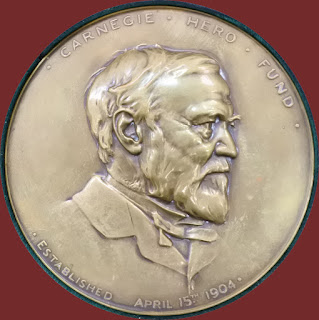Each year, hundreds of researchers visit the G.W. Blunt White Library
in the Collections Research Center to take advantage of one of the finest
collections of primary and secondary materials relating to American maritime
history. Those that use the collection include historians, other scholars,
genealogists, artists, students, teachers, history hobbyists, commercial users
and more. Annually, a segment of academic users make their way to Mystic via
the
New England Regional Fellowship Consortium, of which the G.W. Blunt White
Library is a founding member. For over a decade,
NERFC, a collaboration of 21
major cultural agencies, has been awarding fellowships to scholars. The
Consortium will offer at least 15 awards in 2016–2017, and each grant will
provide a stipend of $5,000 for a minimum of eight weeks of research at
participating institutions. Awards are open to U.S. citizens and foreign
nationals who hold the necessary U.S. government documents. Grants are designed
to encourage projects that draw on the resources of several agencies.
Each itinerary must:
·
be a minimum of eight
weeks
·
include at least three
different member institutions, and
·
include at least two
weeks at each of these institutions.
The following scholars have visited, or will
visit, the Library in 2015. Along with their name and affiliation, each fellow
has provided a short description of their project. We are honored to have such
qualified individuals take advantage of the broad collections available at
Mystic Seaport.
Cynthia Bouton, Texas A & M Univ.- Subsistence, Society, Commerce, and
Culture in the Atlantic World in the Age of Revolution - The era of
Atlantic Revolutions witnessed an acceleration in the circulation and
commodification of subsistence foods, and reorganized social and political
links in provisioning chains. Revolutionary debates politicized property,
production, distribution, and consumption in historically specific ways. This
book project studies staple food production, marketplace interaction, entangled
trade networks, government policies, and consumer practices to understand
shifting food regimes in the international Atlantic.
Dan
Du,
Univ. of Georgia– This World in a Teacup: Sino-American Tea Trade in
the Nineteenth Century -The Sino-American tea trade during the nineteenth century was a
crucial element in Chinese-American relations and the economic transformation
of global capitalism. Tea, as a key staple in the international market and one
of the largest imports into the United States, illuminates multilateral
economic and cultural connections and clashes among the U.S., China, Great
Britain, Japan, and India. This project will explore the influence of the tea
trade on American material culture. Embargo of tea during the Revolution
sparked patriotism in American towns, but historians of the republic consigned
tea consumption to oblivion. However, it remained prevalent. It witnessed the
making of American cultural, national identity, particularly when compared with
English and Chinese tea culture. Furthermore, since consumption allowed
capitalism to shape social relations and instill its spirit among ordinary
people, tea consumption, which was promoted by marketing and advertising,
crystallized the ethos of the nineteenth-century society dissected by class,
gender, and race.
 |
| Univ. of Georgia Ph.D. candidate, Dan Du, exploring logbooks in the collection. |
Andrew
Edwards, Princeton Univ. - Money and the American Revolution- Andrew’s
research concerns two events, one well known, the other relatively obscure: the
American Revolution and the currency revolution in American money. Over
the course of the Revolutionary War, money in American conception and practice
changed from measure to metal. This transition, from a ‘unit of account’ to a
commodity currency, defined in terms of gold and silver, has long typically
gone unremarked under the assumption - shared by many historians - that money
is neutral in American political history and that such development is part of
the natural course of things, if not entirely uncontested. It is Andrew’s
intention to challenge this assumption.
Kathryn
Lasdow, Columbia Univ. – “Spirit
of Improvement”: Construction, Conflict, and Community in Early-National Port
Cities – From 1789 to 1830, budding
capitalists advanced a vision for American cities that placed ports at the
center of promise and prosperity. But Americans across the social spectrum
disagreed over the designs and material realities of port construction. Some
city dwellers questioned whether these projects were truly “improvements” at
all, arguing they infringed on the property rights of small land- and
wharf-owners and displaced
entire neighborhoods. Some residents turned to lawsuits, mob violence, and the
destruction of building sites to halt impending construction. This dissertation
examines this dialectic between capitalist urban planning and community
response in early-nineteenth-century American port cities.
Gregory
Rosenthal, SUNY Stony Brook – Hawaiians who left Hawaiʻi: Work,
Body, and Environment in the Pacific World, 1786-1876- For decades, historians
have written of the Atlantic World as an historical arena of transoceanic
exchange and the circulation of people, goods, and ideas among African,
European, and American actors. But only recently have historians begun to use
the same tools to reconstruct histories of other transoceanic spaces, such as
the Indian Ocean and the Pacific Ocean. Gregory’s project contributes to the
study of the nineteenth-century Pacific World by focusing on the paths traveled
within and beyond Hawaiʻi by Native Hawaiian wage workers in the transoceanic
economy. For nearly a century, from the 1780s to the 1870s, Hawaiian men
labored in extractive industries all across the Pacific, from China to Hawaiʻi
to California and on ships at sea. Hawaiian workers extracted sea otter furs,
sandalwood, bird guano, whale oil, cattle hides, gold, and other commodities.
All of these trades were of global economic significance in the late eighteenth
and early nineteenth centuries. By placing Hawaiian working-class actors at the
center of nineteenth-century Pacific history, Gregory argues that the movement
and mobility of Hawaiians across the ocean in search of work was a key
component of trans-Pacific integration.

















